Kew to Heidelberg - 1890

An illustrated Saturday afternoon jaunt through the wilds of Melbourne's east - for those who fancied culture over field sports.
Illustrated Australian News and Musical Times (Melbourne, Vic.: 1889 - 1890, 01.02.1890, page 18)
FROM KEW TO HEIDELBERG.
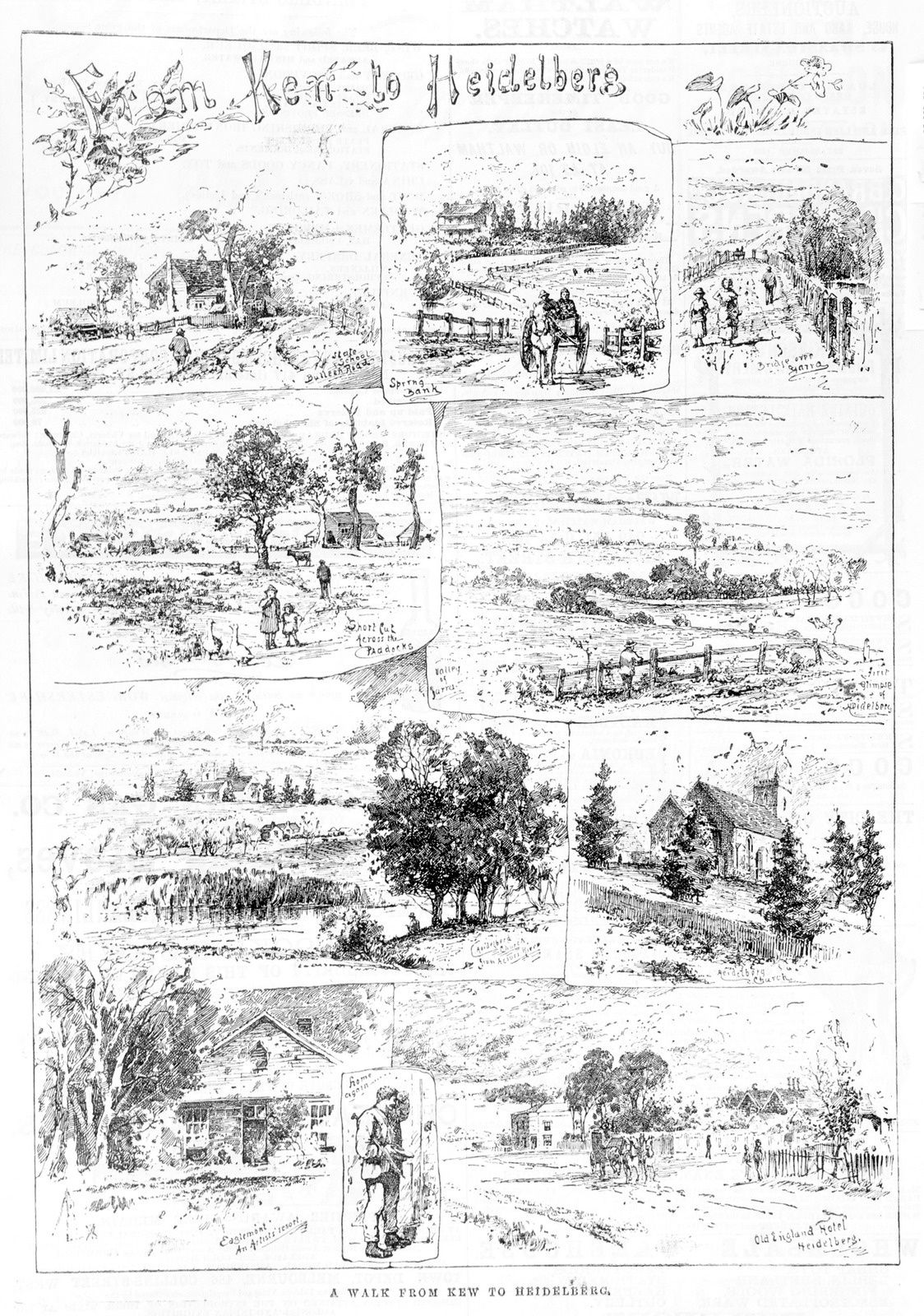
To how many people, living in and around Melbourne, is the outer circle of that city a sealed book? Unknown, because unread. And yet, did but her citizens deign to unclose the volume, and look with intelligent eyes, a whole number of bright and beautiful pictures would reveal themselves to their astonished gaze.
“By jove! I had no idea there was anything so pretty near Melbourne," was the remark of one who had for the first time left the Saturday afternoon cricket match for the beautiful country lying between Kew and Heidelberg.
No, he had no idea of the beauties of his own country, any more than have the thousands of other young men, who develop their muscle at the expense of their intellect, and who prefer the confined space of the football arena to the free, open and beautiful country so easily within their reach.
Let some of them for once start on an expedition some Saturday afternoon, and walk from Kew to Heidelberg, and test the pleasure which comes from a closer acquaintance with nature, and try the exhilarating effects of a brisk walk in pure air, amid beautiful scenery.
Starting from Kew station, the best way for us to take (and we are supposing that those who wish to take the walk are really desirous to see the country) is to cross the Main-road and go up Princess-street, and, taking the the first turning to the right, enter Walpole-street, through Malmsbury-street, when upon our left hand will lie the whole valley across which we are about to traverse.
It is one of the loveliest views near Melbourne, this, from the end of Walpole-street. In the far distance stand, in steadfast array, the mountain ranges, like silent but powerful guardians of the peaceful valley at their feet. Blue amidst the glimmering haze of the golden sun, they cast rich, purple shadows on the little homesteads nestling in sheltered spots amongst the trees. It is the land of Beulah and we feel a restfulness to our wearied spirit as we look.
Then to explore this favored spot. Descending the slope leading towards the river, we pass the brick kiln and crossing the bridge, leave Willsmere Park on the left and go along a new road called the Kilby-road, in which stands a picturesque little homestead which some might call dilapidated.
Keeping straight along this road we come to the Bulleen-road, which leads us to Heidelberg by a somewhat circuitous route, bearing first to the right and then to the left through acres of cultivated farm land; passing the gates of a residence called Koor-nung(!) and further on those of the highly favored Spring Bank whose site is a matter of almost envious remark to the passerby. It stands on the summit of a hill, and the grounds slope down to the river on the one side, and stretch along in luxuriant wealth on the other.
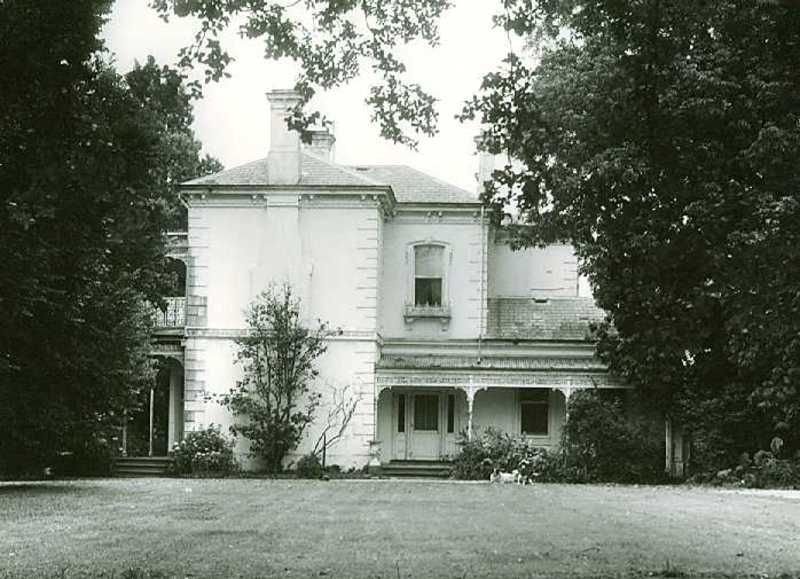
Immediately after passing this house, can be seen the first glimpse of Heidelberg, looking straight across the fields on the left. There stands the little village, with its little square towered church, only needing the screening ivy to make it look like one of the old churches in the Mother country.
Though it looks so near, we still have some distance to go before reaching Heidelberg. On again then, until we see, still to the left, the roofs of some low buildings, then we strike a short cut across the fields, making towards those buildings and slipping the panels, find ourselves in the direct road to Heidelberg.
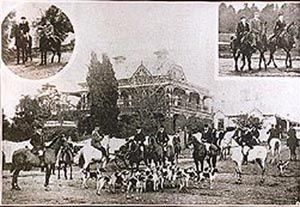
From the bridge, we catch another view of the church, which now lies on our right hand, and then, following our path, we take the second turning to the right, and find our way to the Old England Hotel, where once the coaches put up, before the encroachment of the iron rails, which bring civilisation, at tho expense of much devastation. Here refreshment is to be had—by paying for it (as the Old English sign board attests), and, unfortunately, the penalty of refreshing oneself is somewhat heavy there.
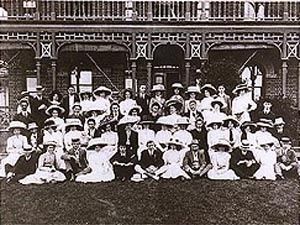
"During the last century the Hotel was very much in vogue as it attracted the fashionable set of the day and became a popular honeymoon resort for newlyweds. In fact, a Sunday afternoon ride to the Old England was very much the "in thing" to do."
Perhaps, when walks to Heidelberg have become more popular, mine host may see his way more clearly to supplying the pedestrian with a light refreshment at less cost. Well, we have refreshed ourselves — no matter the cost — and we take a stroll to the church while we wait for the train and then wend our way to the station,
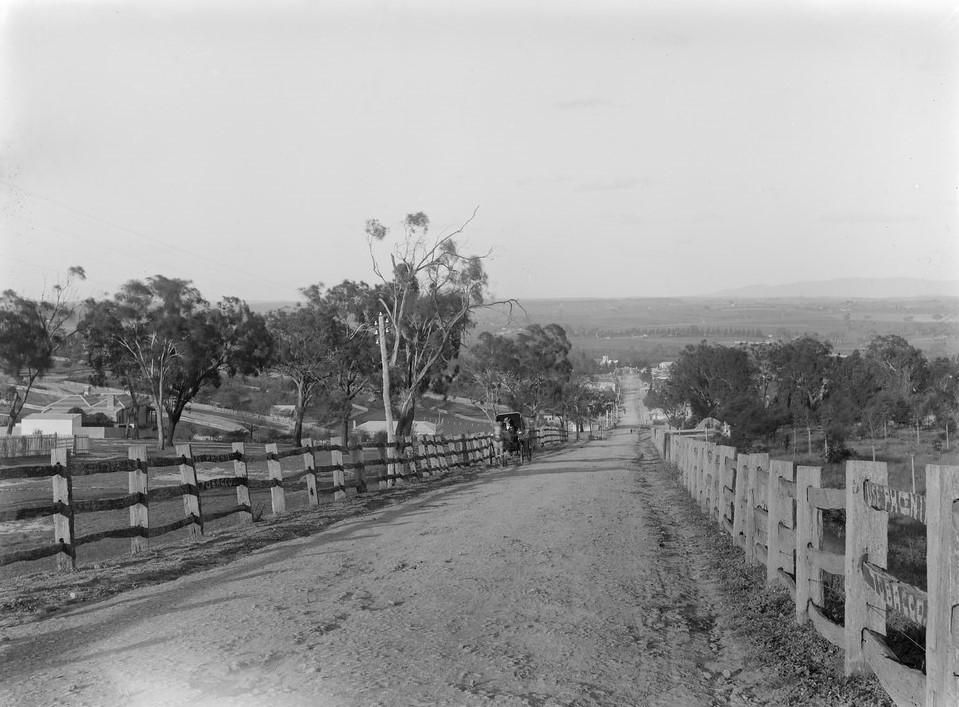
whence we can see the stillness of evening falling over the quietening hamlet, and the last rays of the sun touching the hills with opal tint, while faintly in the distance the pallid moon proclaims her coming reign, and, one by one, the village lights appear, and the gleaming eyes of the distant homestead windows bespeak the laborers' home coming as the silent night steals on.
On the opposite hill stands the Eagle of Eaglemont ; and away there among the trees the artists hold high carnival in their echoing empty home.
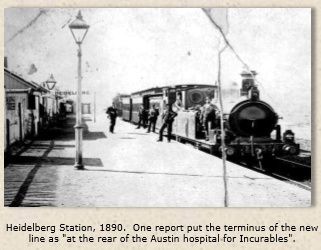
But see, the train arrives and we take our seats. As we journey on, the sad towers of the asylum show us how near we are to Kew, which we left by a road almost as winding as the river that it crosses, and then back to Melbourne, refreshed and invigorated with the breath of the country about us, and the curtain of sleep falls over us so softly to-night.
Member discussion